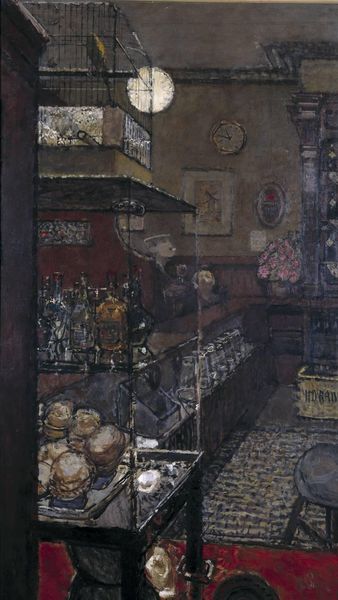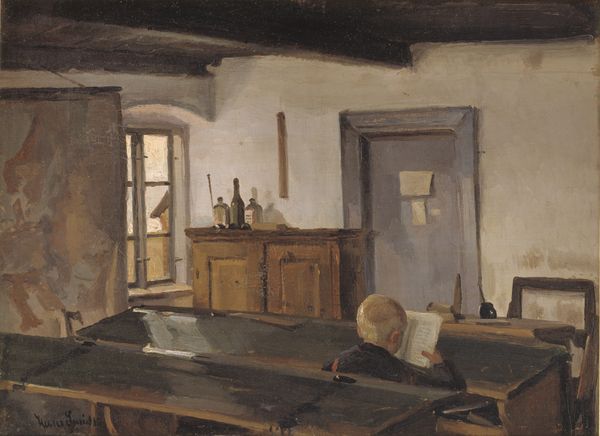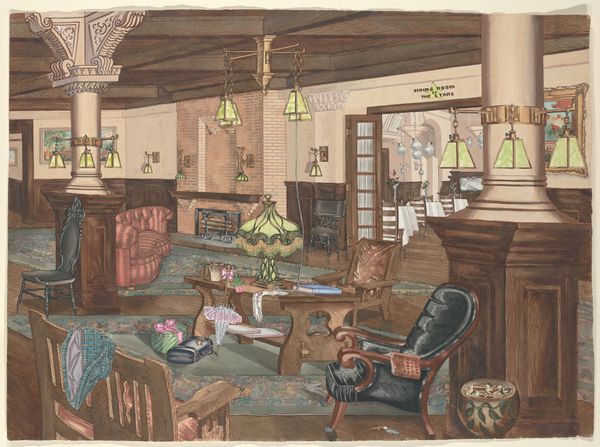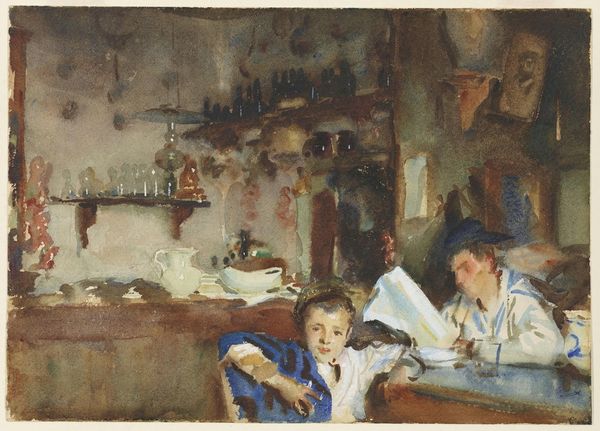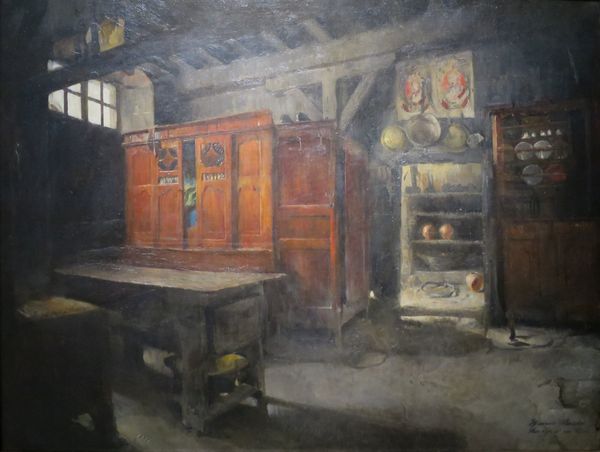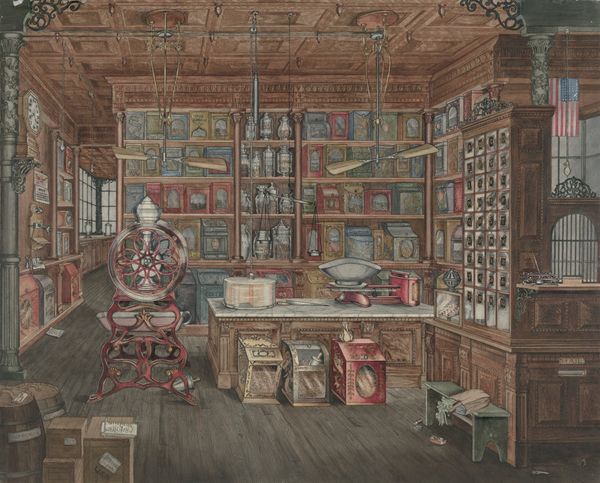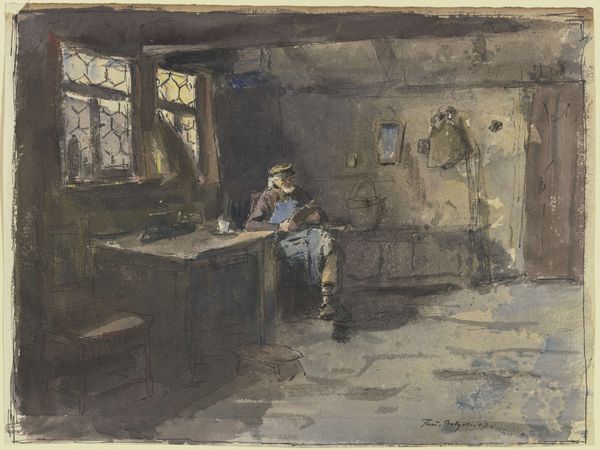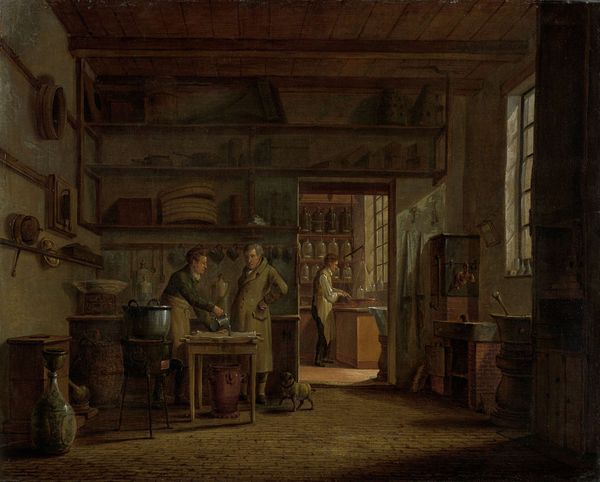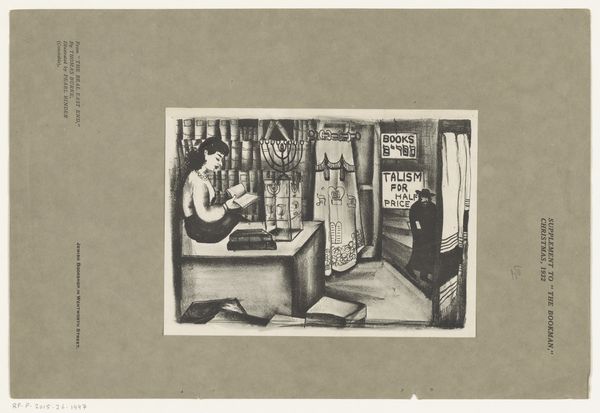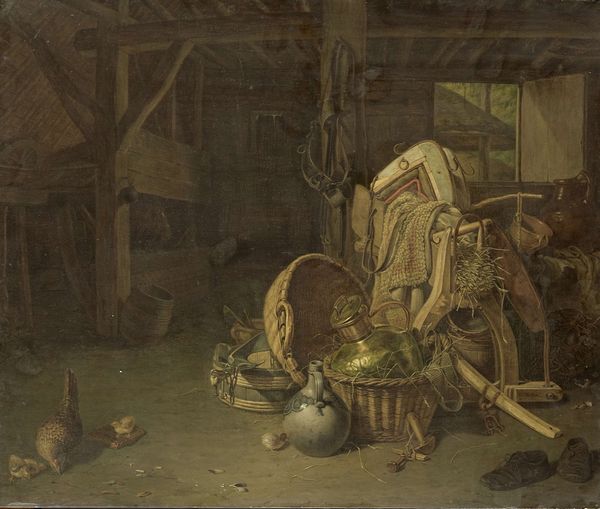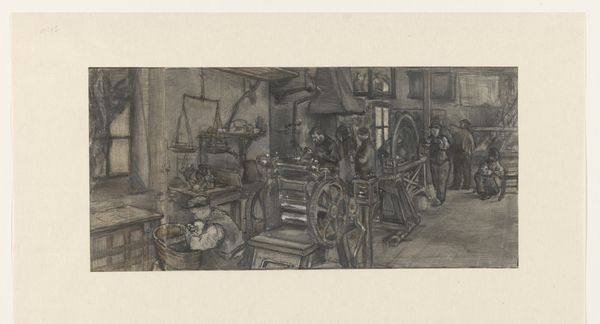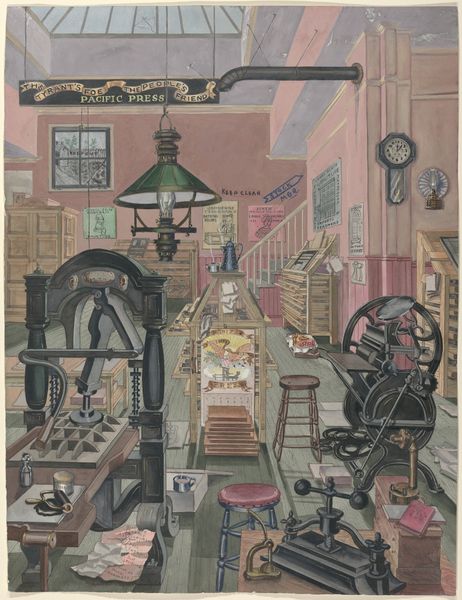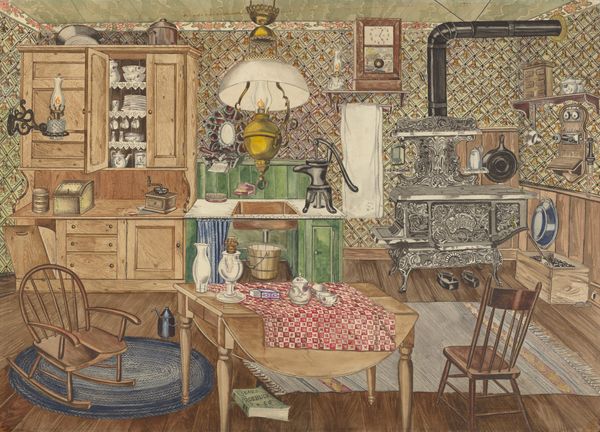
Dimensions: 40.5 cm (height) x 60 cm (width) (Netto)
Curator: Ah, welcome. I'd like to introduce you to Hans Smidth’s 1909 oil painting, "A Country Grocer," currently held at the SMK, Statens Museum for Kunst. Editor: What strikes me immediately is the sheer density of objects. The artist has really captured the feeling of a lived-in, bustling workspace. All those hanging pots! It almost feels claustrophobic. Curator: Yes, Smidth meticulously details the materiality of the grocer’s environment. Look at how he renders the different metals – the gleam on the pots and pans versus the duller finish of the buckets. It emphasizes the grocer's dependence on readily available materials for storing, cooking, and presenting his goods. This wasn't a world of disposable plastic; it was one of durable, tangible items, impacting both labor and domesticity. Editor: It speaks volumes about the economics of the time. This scene wasn't uncommon, it shows the social framework of rural Denmark and, I'd argue, highlights a form of visual realism. The arrangement reminds us that this grocer likely wasn't part of a massive chain. This grocer was integral to his community’s functioning, which relied heavily on his ability to navigate networks of provision, labor, and demand. Curator: Exactly! And consider the young boy behind the counter; perhaps the grocer’s son or apprentice? It touches upon questions about class, social mobility and even child labor practices at the turn of the century. Editor: The inclusion of that child brings so much weight, culturally, reminding us of family businesses and social values. Note that we are also invited to contemplate labor itself. Every object, every placement serves some need within this micro-economy. Also note that Smidth presents what might be seen today as quite common, quotidian details which allows us to view a certain section of early 20th-century social life. Curator: I appreciate how the artist integrates light and shadow, further articulating various surface qualities. And this, too, impacts commerce, because good lighting means better presentation of goods, for example. This really brings us closer to the way the artist interpreted his subject through paint on canvas. Editor: Reflecting on it, I find Smidth adeptly presents how a society and a community sustained itself on multiple levels: production, supply chain, presentation. I appreciate these subtle, complex details. Curator: I concur. It really is more than just a "grocery store." The artwork gives great insight to labor history and how integral small business really was for any given society, especially rural ones, like that of early 20th-century Denmark.
Comments
No comments
Be the first to comment and join the conversation on the ultimate creative platform.
